Abstract
1. Lymph flow and pressure fluctuations were measured by cannulating popliteal efferent and distal hind-limb afferent lymphatic vessels in anaesthetized sheep. The cannula outflow height was raised above the vessels to increase lymphatic outflow pressure. 2. Lymph flow decreased non-linearly as the outflow was raised. The rate of decrease increased with increasing outflow height. 3. Lymphatic contraction frequency rose and stroke volume fell with increasing outflow height. 4. The calculated power necessary to move lymph along the cannula initially increased with outflow height but it reached a peak and was reduced again by raising the outflow further. Calculated lymphatic stroke work followed a very similar pattern. 5. Lymph flow was maintained up to a greater outflow height in afferent than in efferent vessels. Curves relating frequency, power and stroke work to outflow height were shifted to the right in the afferent lymphatics. 6. These results are consistent with an intrinsic lymphatic pump which can be stimulated by increasing pressure. At high pressures, however, the pump fails.
Full text
PDF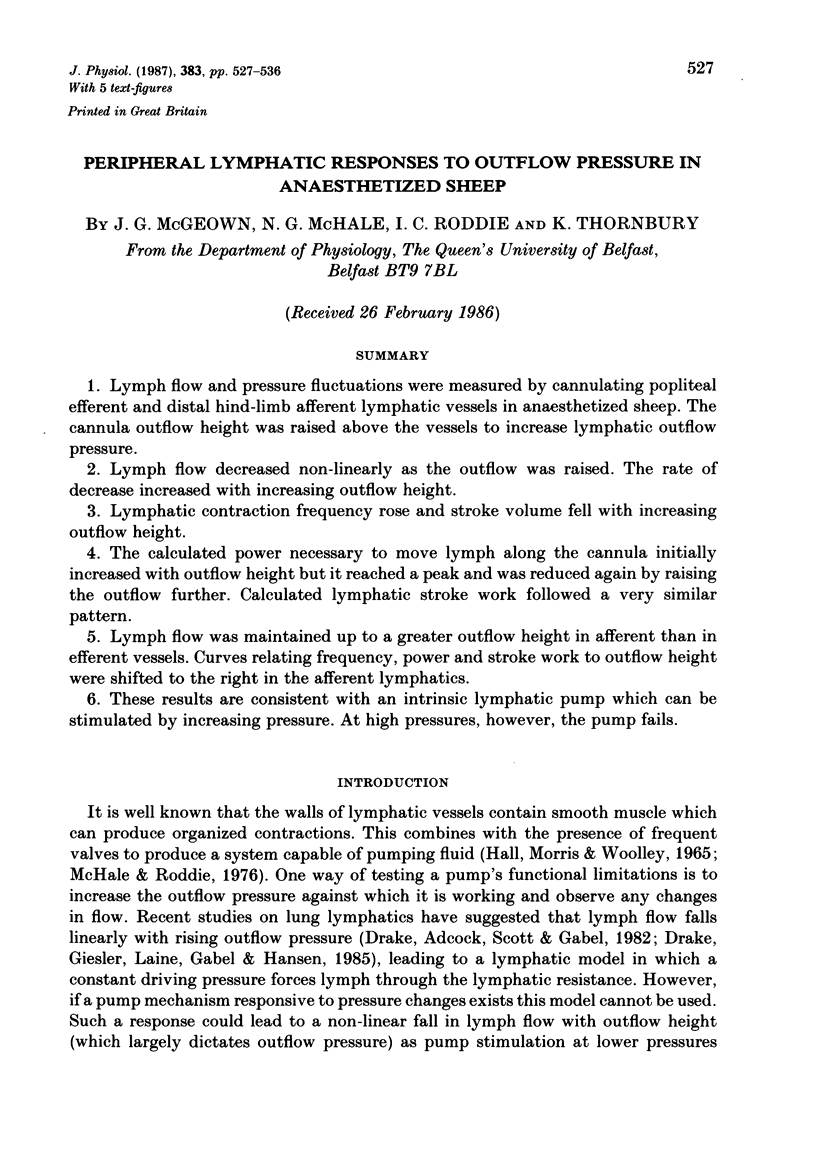
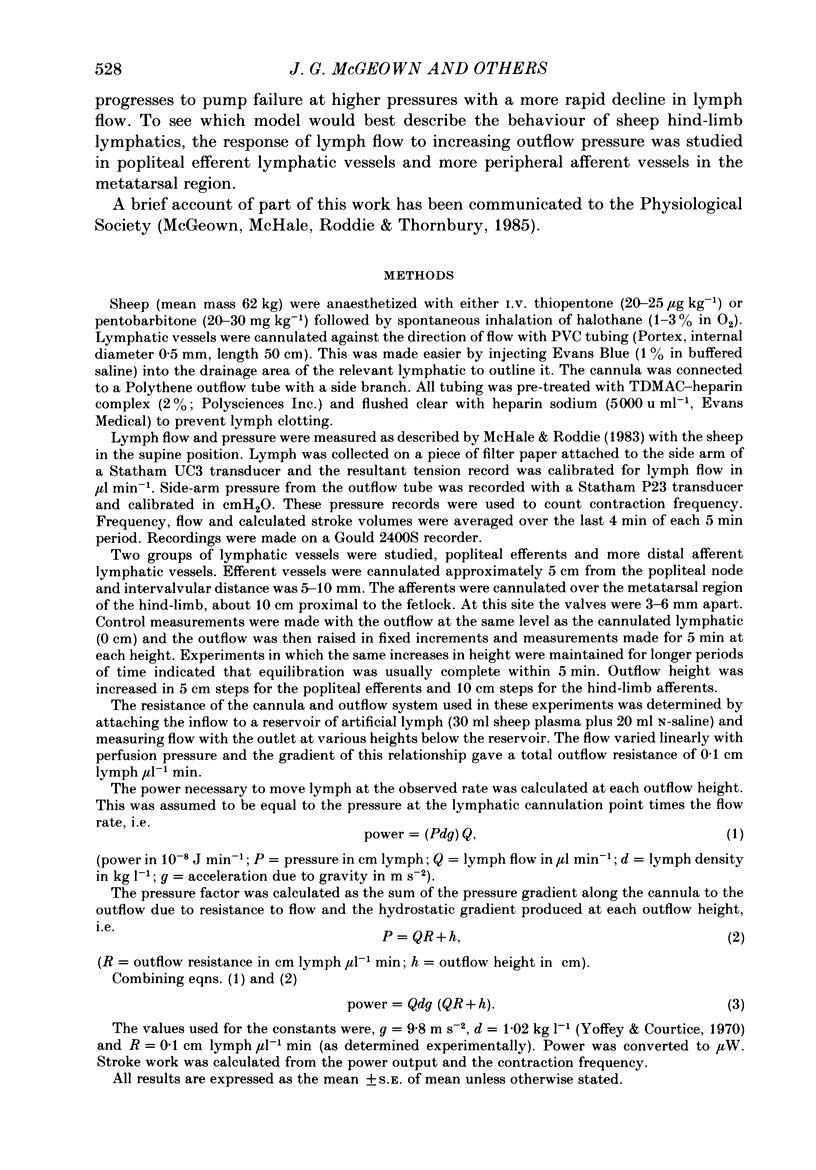
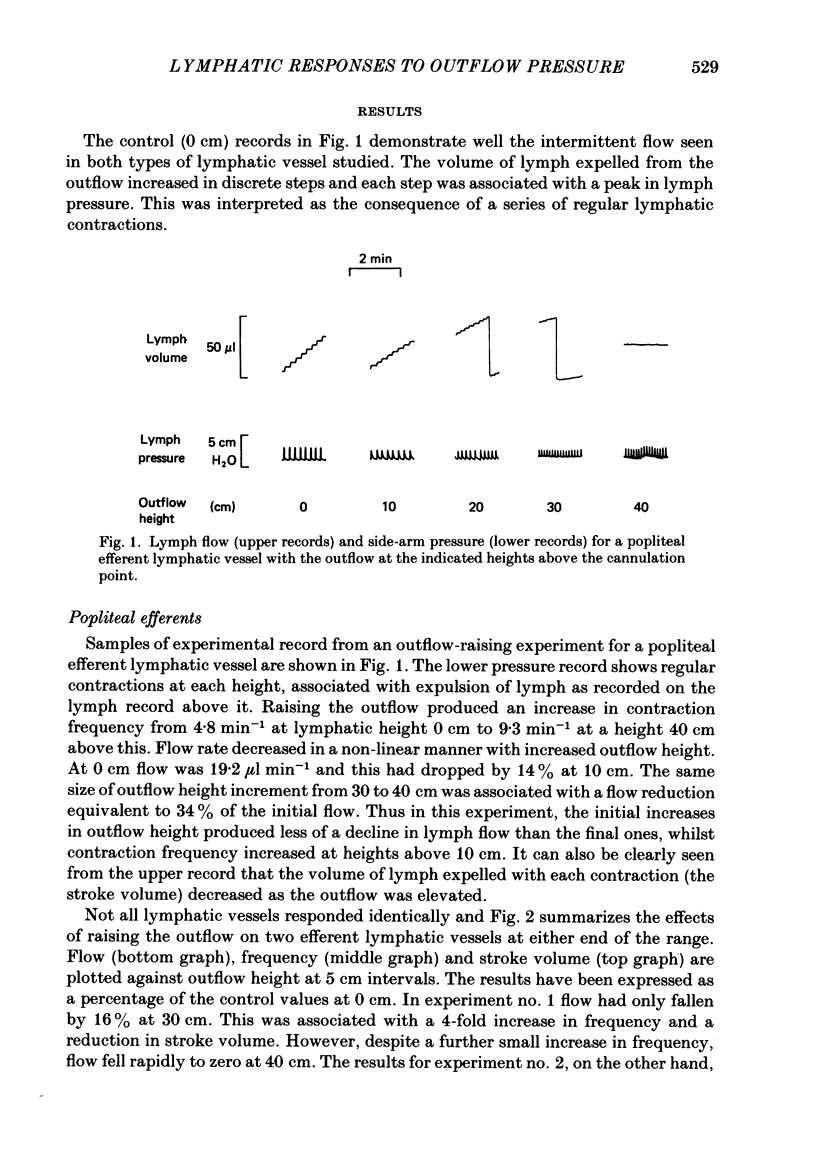
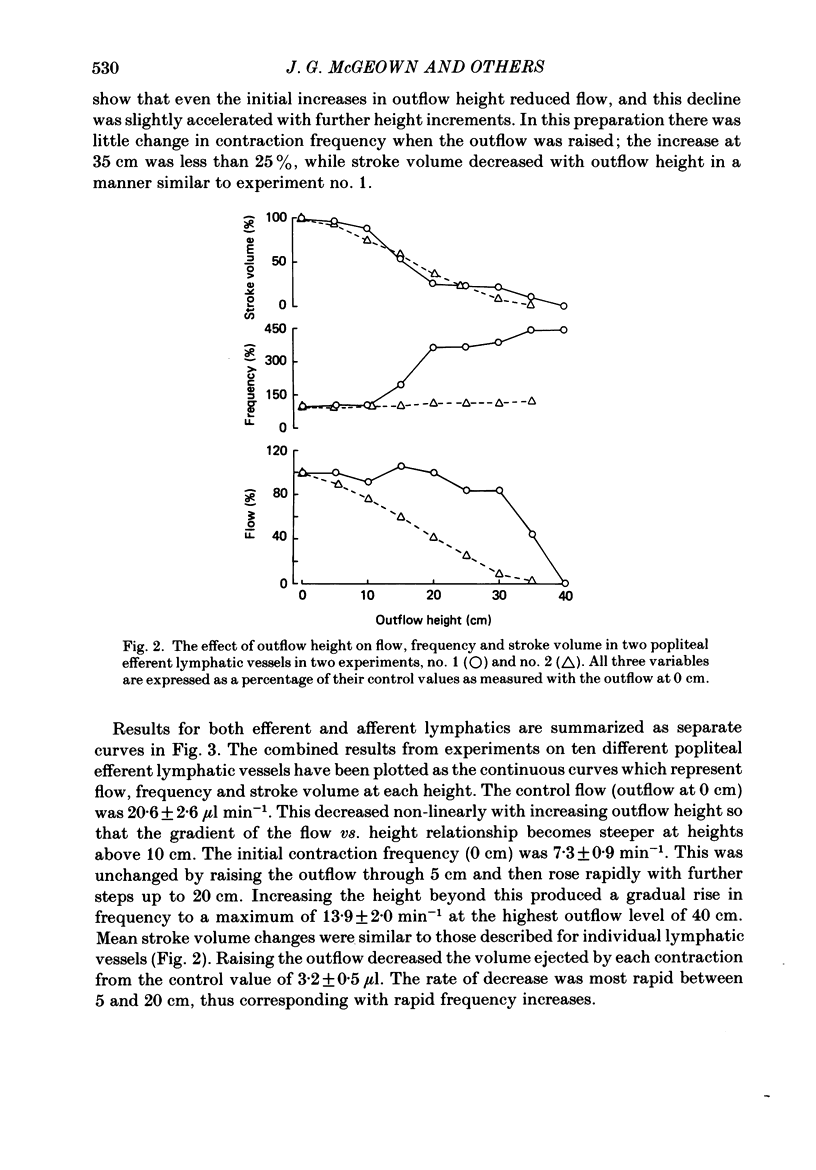
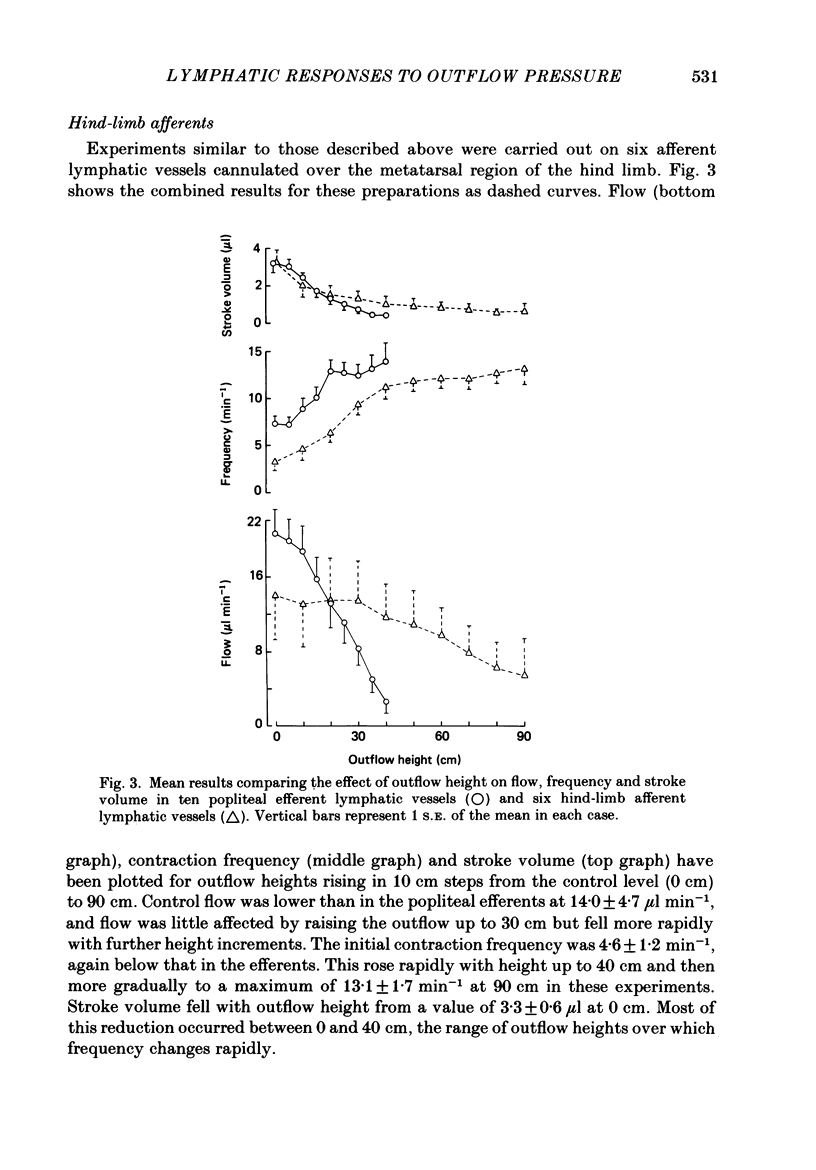
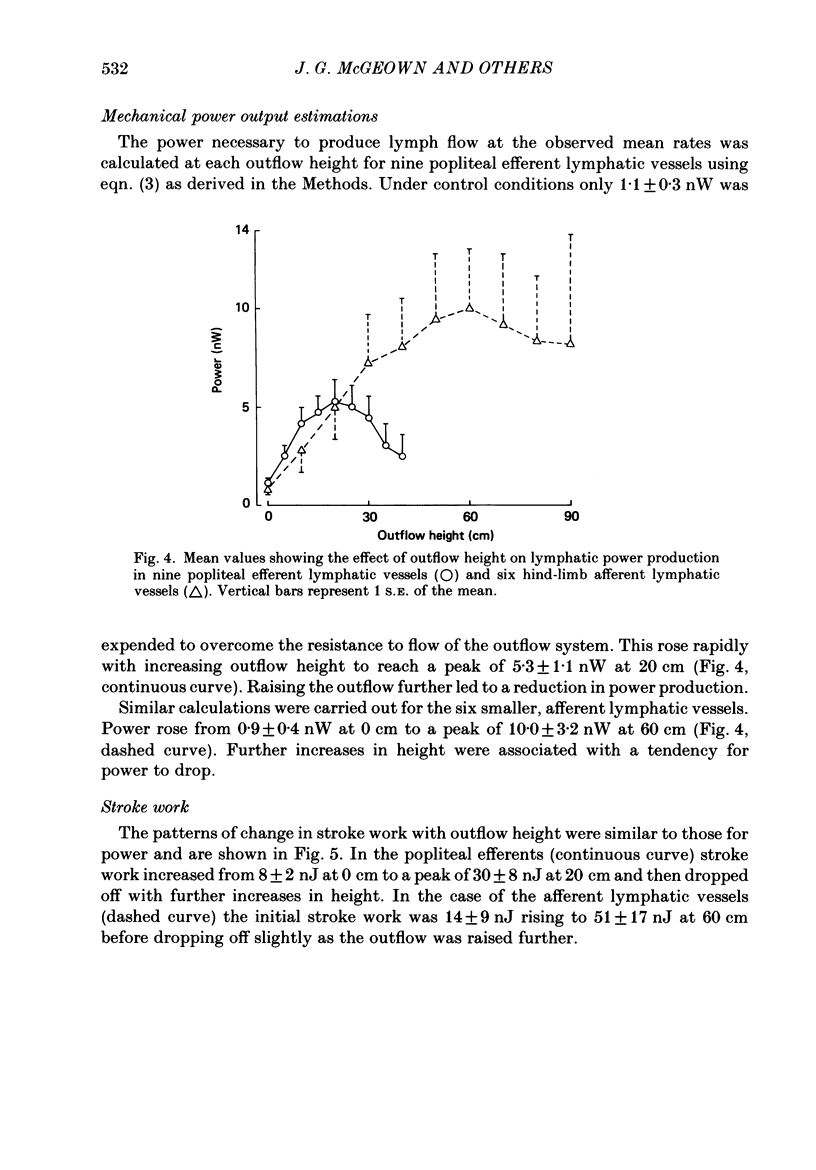
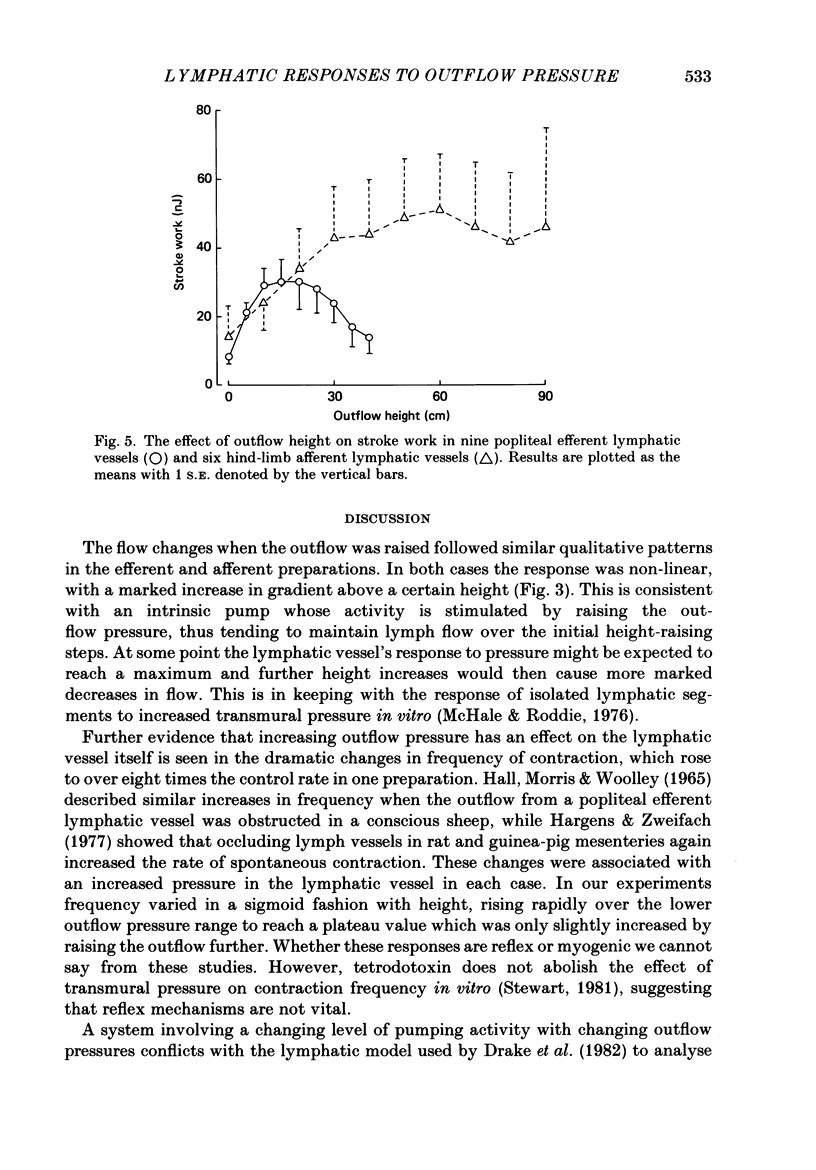
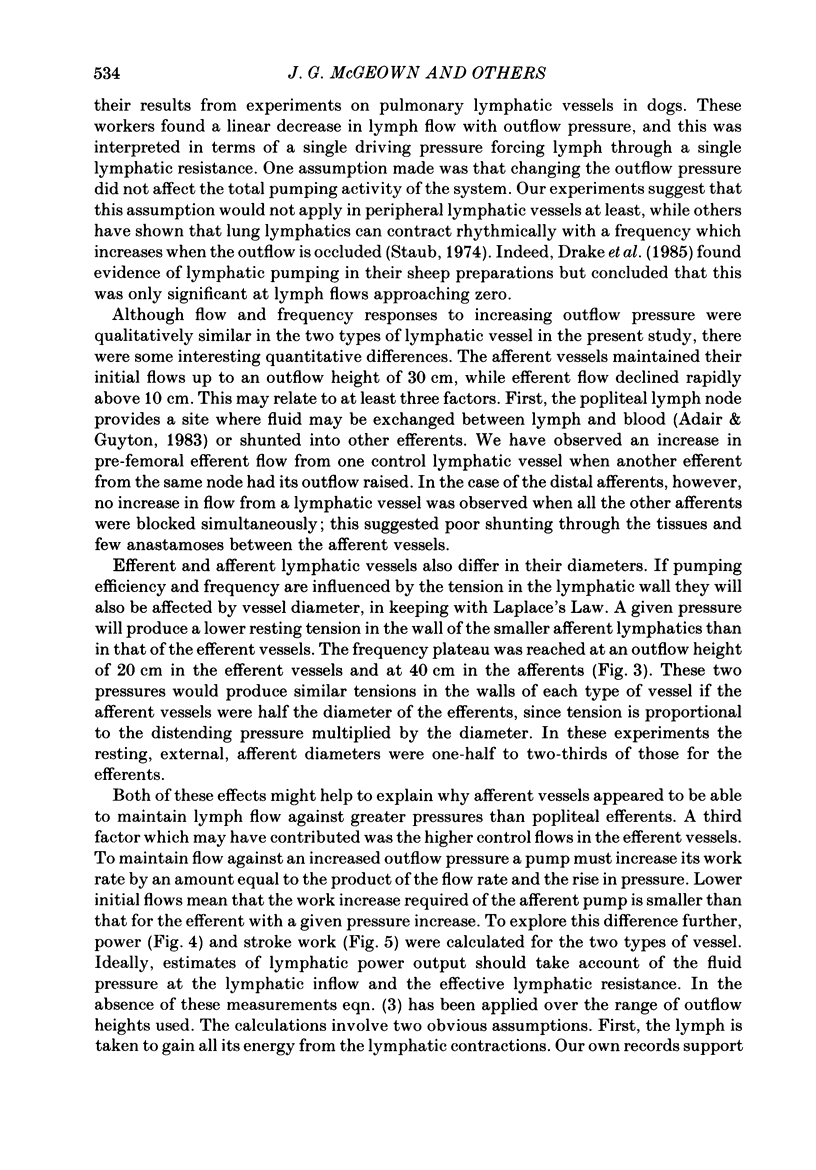
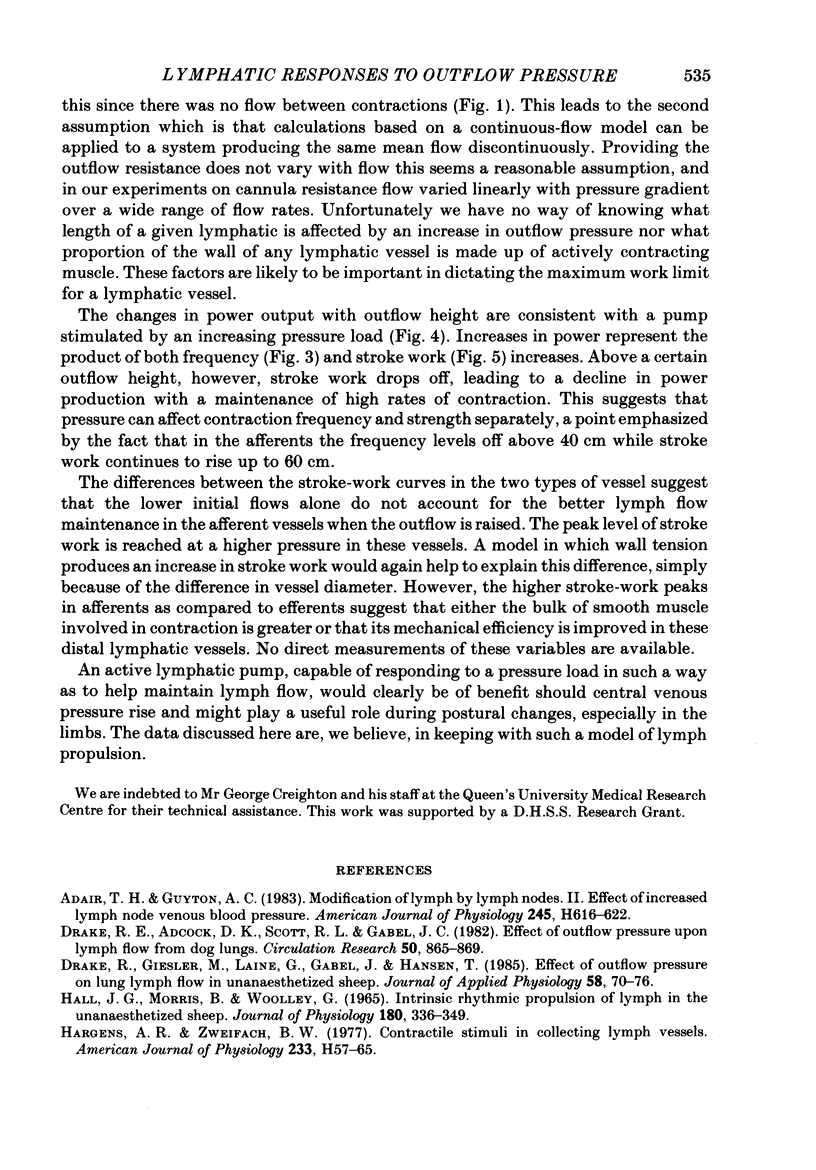
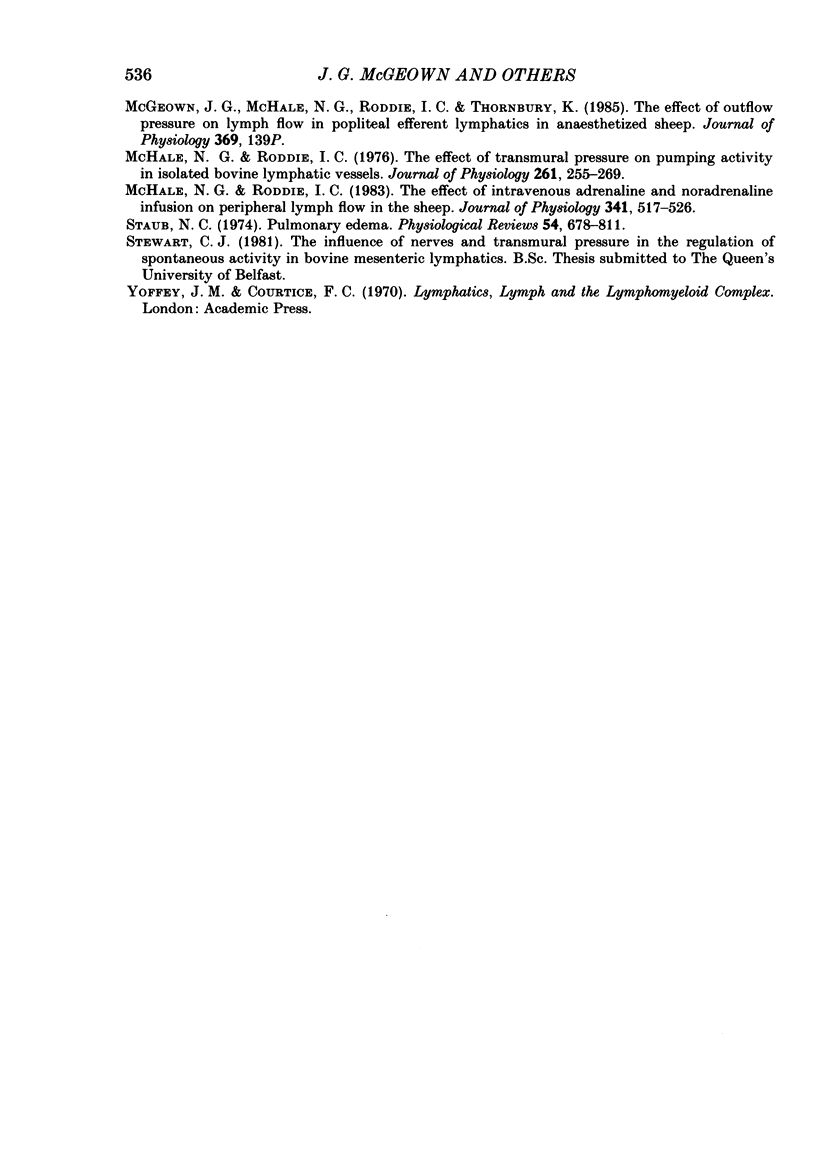
Selected References
These references are in PubMed. This may not be the complete list of references from this article.
- Adair T. H., Guyton A. C. Modification of lymph by lymph nodes. II. Effect of increased lymph node venous blood pressure. Am J Physiol. 1983 Oct;245(4):H616–H622. doi: 10.1152/ajpheart.1983.245.4.H616. [DOI] [PubMed] [Google Scholar]
- Drake R. E., Adcock D. K., Scott R. L., Gabel J. C. Effect of outflow pressure upon lymph flow from dog lungs. Circ Res. 1982 Jun;50(6):865–869. doi: 10.1161/01.res.50.6.865. [DOI] [PubMed] [Google Scholar]
- Drake R., Giesler M., Laine G., Gabel J., Hansen T. Effect of outflow pressure on lung lymph flow in unanesthetized sheep. J Appl Physiol (1985) 1985 Jan;58(1):70–76. doi: 10.1152/jappl.1985.58.1.70. [DOI] [PubMed] [Google Scholar]
- Hall J. G., Morris B., Woolley G. Intrinsic rhythmic propulsion of lymph in the unanaesthetized sheep. J Physiol. 1965 Sep;180(2):336–349. doi: 10.1113/jphysiol.1965.sp007706. [DOI] [PMC free article] [PubMed] [Google Scholar]
- Hargens A. R., Zweifach B. W. Contractile stimuli in collecting lymph vessels. Am J Physiol. 1977 Jul;233(1):H57–H65. doi: 10.1152/ajpheart.1977.233.1.H57. [DOI] [PubMed] [Google Scholar]
- McHale N. G., Roddie I. C. The effect of intravenous adrenaline and noradrenaline infusion of peripheral lymph flow in the sheep. J Physiol. 1983 Aug;341:517–526. doi: 10.1113/jphysiol.1983.sp014821. [DOI] [PMC free article] [PubMed] [Google Scholar]
- McHale N. G., Roddie I. C. The effect of transmural pressure on pumping activity in isolated bovine lymphatic vessels. J Physiol. 1976 Oct;261(2):255–269. doi: 10.1113/jphysiol.1976.sp011557. [DOI] [PMC free article] [PubMed] [Google Scholar]
- Staub N. C. Pulmonary edema. Physiol Rev. 1974 Jul;54(3):678–811. doi: 10.1152/physrev.1974.54.3.678. [DOI] [PubMed] [Google Scholar]


